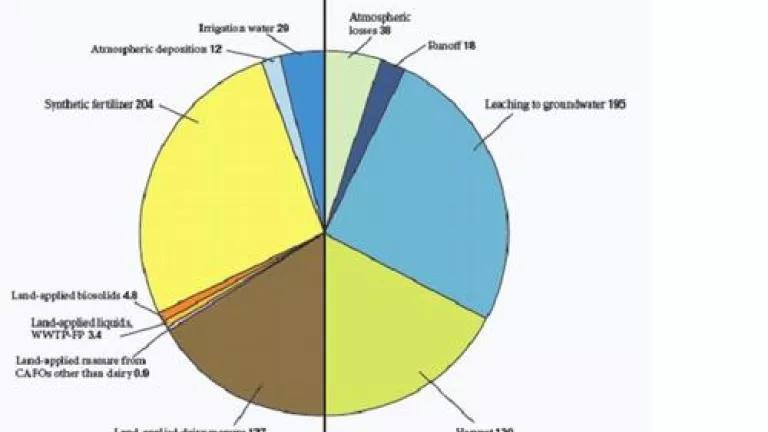
Farmers are losing costly plant nutrients while we gain a groundwater pollutant. That was my read of a landmark report released last week by researchers at UC Davis at the request of the state regulators and the California Legislature.
For several hundred thousand rural residents in California’s Central Valley, the problem of contaminated groundwater is old news. They wake up worrying if they have enough bottled water to make coffee or get through the day. Many drink nitrate contaminated water without knowing they are at risk from a contaminant that can cause birth defects, thyroid dysfunction and other serious illnesses. The worst hit are poor communities, mostly communities of color, where dollars for bottled beverages or local water treatment facilities are hard to come by.
But a landmark report released last week by scientists at UC Davis puts the problem under a brighter spotlight:
- Of the 2.6 million people who depend on groundwater in the study region (lower Central Valley and Salinas Valley) 250,000 face health risks from drinking unsafe water and another 1.3 million are “financially susceptible” to clean-up costs.
- 96% of this nitrogen came from fertilizer or animal manure applied to farm fields where it eventually leached deep into groundwater systems.
- 32 million acre feet of groundwater under this region now exceeds the drinking water limit for nitrate, according to the report. By my math that’s enough water to supply the City of Los Angeles for 50 years at current demand.
Those are heavy statistics. But here’s the one that really surprised me: Only one third of all the nitrogen applied by farmers to grow crops was actually absorbed by the crop. The rest washed away or evaporated into the environment, contributing to global warming (nitrogen manufacture and use is the largest source of greenhouse gas emissions in agriculture), pollution of our rivers and streams, or leaching into groundwater as described in the report (see pie chart below).
One third? In all this gloomy news, I see here the glimmer of an opportunity. Setting aside the fact that a lot of animal manure is applied to crops near livestock operations as a means of low-cost waste disposal, for most growers it just can’t be a good business decision to lose two thirds of crop nutrients that have to be purchased, transported and applied to the field with heavy equipment.
While you wouldn’t know it from the Executive Summary of the UC Davis paper, deep in the report the authors confirm what is intuitively obvious: Improving nitrogen use efficiency is cost effective, if not profitable. Growers who can measure the nitrogen available to their crops from soil and irrigation water can buy and apply less. By timing nitrogen applications to coincide with plant growth, more is used by the crop. Conserving water and integrating fertilization with irrigation is another way to improve efficiency. For example, another UC Davis research project (see page 5) finds that Salinas Valley lettuce growers saved $41/acre on average by reducing applications of both nitrogen and water.
But we’re now past the point of nitrogen use efficiency being just a good idea. It’s time for farmers, large food buyers and regulators to take decisive action to shut-off the flow of excess nitrogen to our waterways. The UC Davis paper goes out of its way to emphasize that because nitrogen takes decades to move through groundwater, nitrogen already in the ground will continue to flow even if growers adopt best practices today. Some will grab this fact as an argument for doing nothing now. But action today can have immediate benefits for surface water protection and reduction in nitrogen-caused greenhouse gas emissions. And if we take this problem seriously today, maybe our children will draw tap water without fear for their kids.
